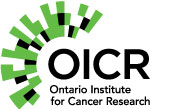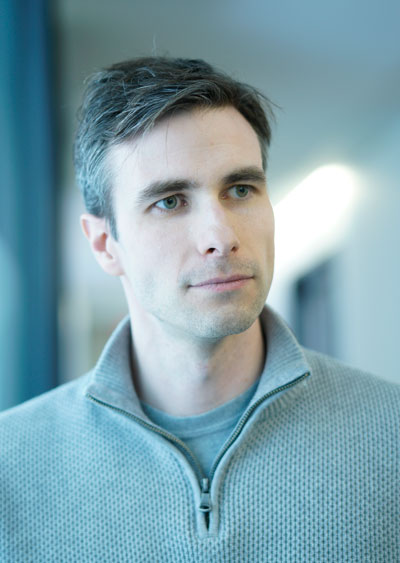
When Neil Armstrong took his first steps on the moon, scientists were taking their first steps in reading DNA – at a rate of one base per month. Within a decade those early breakthroughs would lead to Sanger sequencing, ushering in today’s era of widespread sequencing in labs all around the world. Now, 40 years later, astronauts are sequencing genomes in space and analyzing millions of DNA bases in real-time. OICR’s Dr. Jared Simpson is a leader in helping make that happen.

Jared Simpson
Nanopore sequencers have upended traditional sequencing instruments. These futuristic hand-held gadgets have a mass of 70g and can yield sequencing data within 30 minutes, but how we read that data and turn it into meaningful information is a challenge that requires both computational and biological expertise. Simpson’s expertise resides squarely in this niche.
“Traditional sequencing approaches rely on sending a sample to the sequencer at a laboratory or research institute,” says Simpson. “We’re inverting the way that we’ve been sequencing genomes and bringing the sequencer to the sample instead.”
When we’re dealing with complex biological problems like cancer, small differences in a DNA sequence can make a big difference - Dr. Jared Simpson
Simpson has led the development of software technologies that translate the output – or the signal – from a nanopore sequencer into a series of DNA bases that researchers can read and investigate. He is well known in the nanopore community for having developed nanopolish – one of the top software packages for analyzing nanopore data – which has improved how accurately researchers can assemble data from many fragments of DNA into one composite genome. In some cases, nanopolish has been able to improve the accuracy of genome assembly to 99.9 per cent.
“When we’re dealing with complex biological problems like cancer, small differences in a DNA sequence can make a big difference,” says Simpson. “With improved accuracy, we can better study these diseases, pinpoint their causes and hopefully understand how to treat it.”
Simpson and collaborators have used his algorithms to track the Ebola virus outbreak in Africa in real time and find the origins of the Zika virus outbreak in Brazil.
As the nanopore community graduated from sequencing small viral and bacterial genomes, to yeasts and larger genomes over the last few years, they found themselves facing limitations in their sequencing accuracy, in large part due to a chemical modification commonly found in human DNA called DNA methylation.
Nanopore sequencing relies on detecting how a protein with a tiny channel behaves as a DNA strand travels through it. DNA methylation may change the signal readout and cause errors in the predicted sequence. To address this, Simpson invented a new way to detect methylation from the signal readout. His methods helped the nanopore community sequence the entire human genome, opening new frontiers to study human diseases like cancer.
His methylation approach alone has been used to support nearly 150 published scientific papers
Simpson’s methylation techniques are now integrated into the nanopolish package and routinely used by researchers around the world. To accelerate discoveries, Simpson focuses on the usability and robustness of his tools and continues to make all of his software freely available for the global research community. His methylation approach alone has been used to support nearly 150 published scientific papers to date.
As nanopore sequencing continues to evolve, it’s not difficult to imagine a reality with widespread point-of-care testing for preventing, monitoring and treating cancer. Whether it be in a local cancer centre or even a family doctor’s office, miniature portable sequencing could transform clinical medicine. Simpson and his team are working to make that future a reality.
“Whether one of my lab members is working on analyzing RNA data, or another on detecting DNA methylation, we all work together,” he says. “Challenges with developing software often converge on interesting solutions, so working on multiple applications allows us to build new ideas together and in turn enhance our tools to enable future discoveries.”